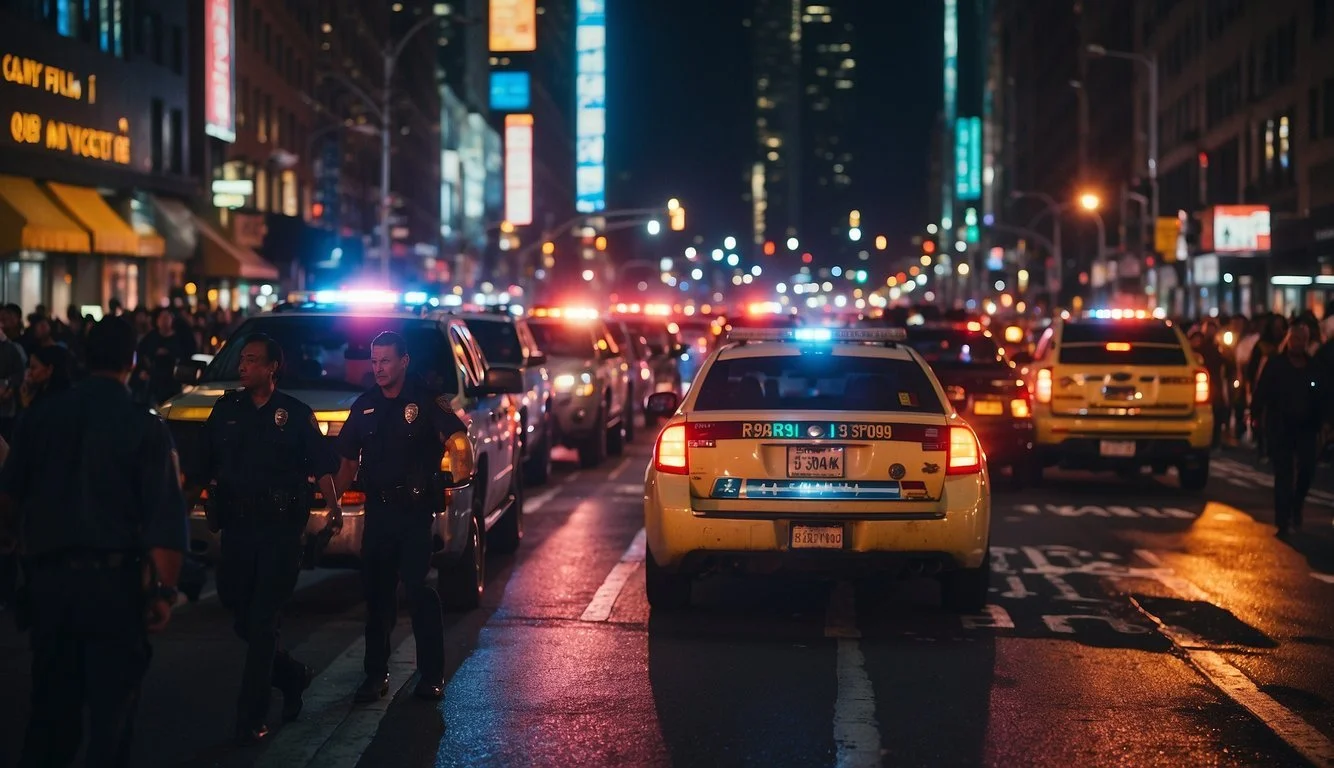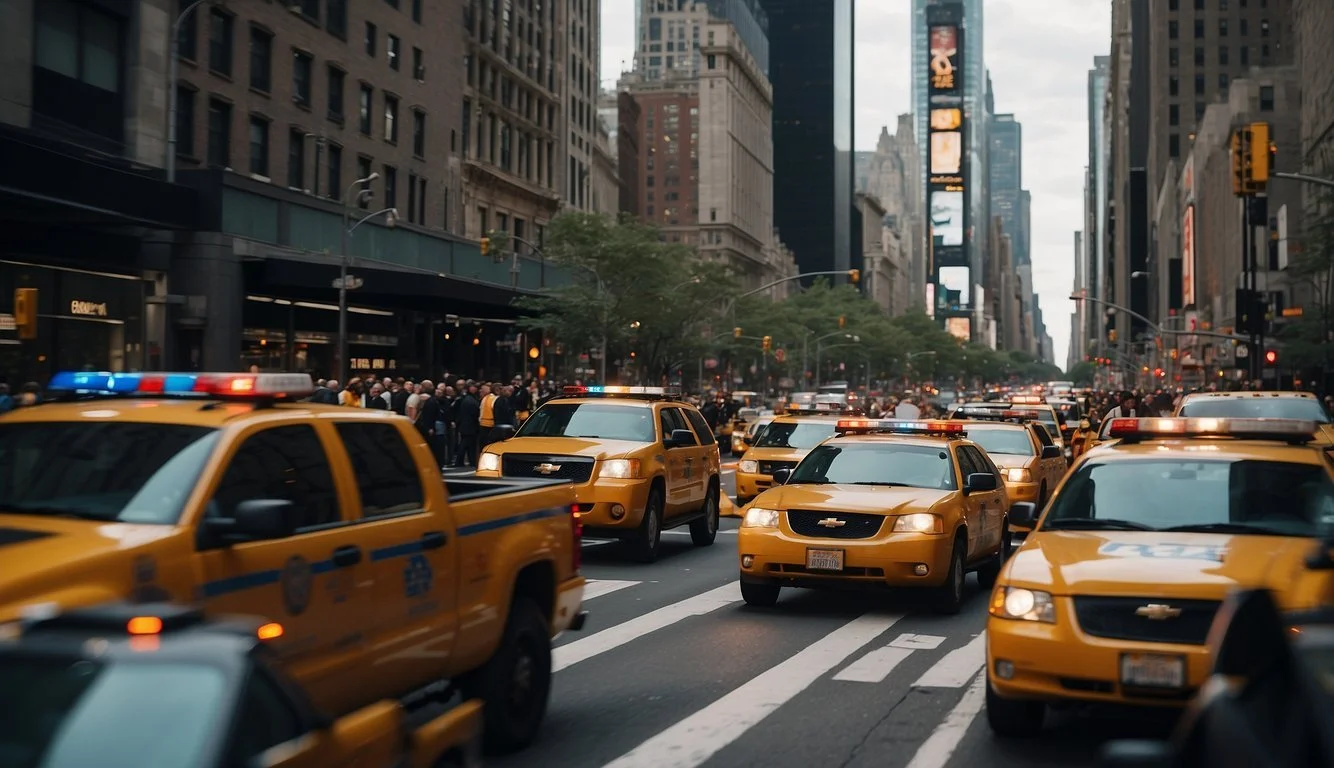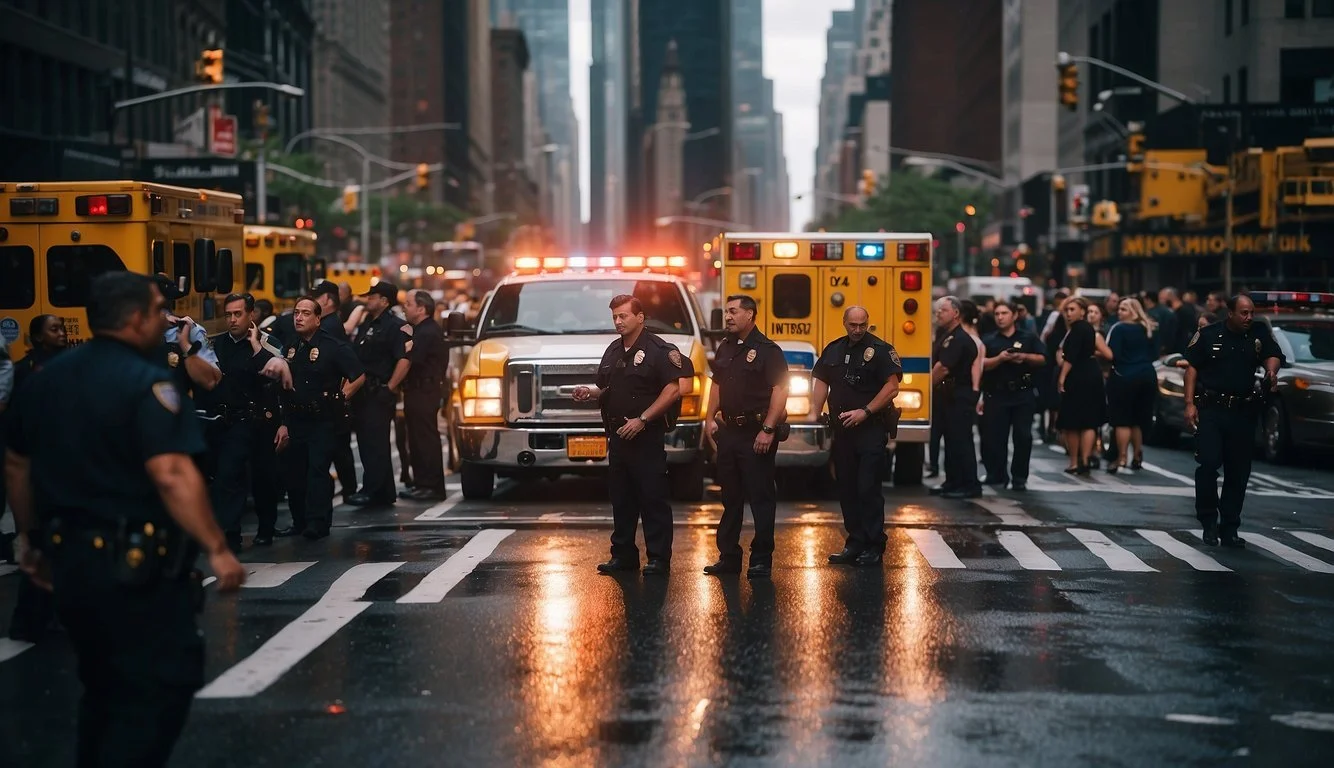Documentary Review: Emergency: NYC (2023)
An In-depth Analysis of Urban Medical Challenges
Emergency: NYC (2023) brings viewers into the intense and often chaotic world of frontline medical professionals in New York City. The series, created by Adi Barash and Ruthie Shatz, captures the unfiltered experiences of doctors and emergency responders as they navigate through critical medical emergencies. From life-saving operations to personal struggles, this docuseries paints a full picture of the highs and lows faced by those who dedicate their lives to saving others.
The documentary is notable for its raw and honest portrayal of the emotional and physical toll on healthcare workers. With touching narratives that blend personal and professional lives, viewers get a glimpse of the real heroes behind the scrubs. One compelling case involves a 29-year-old opera singer who suffers a stroke at a wedding, highlighting the unpredictability and urgency these professionals confront daily.
By focusing on both the professional dedication and personal challenges of medical staff, Emergency: NYC serves as a poignant reminder of the resilience and compassion required in the healthcare field. Balancing dramatic real-life footage with deeply personal stories, this series offers an insightful look into the heart of New York City's emergency medical services.
Documentary Overview
Emergency: NYC is a compelling docuseries that sheds light on the intense lives of medical professionals in New York City. This section will cover an overview of the documentary, including its plot, key people involved, and production quality.
Synopsis of Emergency: NYC
Emergency: NYC follows the day-to-day experiences of frontline medical staff in New York City. The series showcases the challenges they face, both professionally and personally, as they navigate the complexities of healthcare emergencies. The eight-episode series offers a mix of dramatic medical cases, from gunshot wounds to critical surgeries, providing an unfiltered look at the high-pressure world of emergency medicine. This documentary highlights the dedication and human touch that medical professionals bring to their work.
Director and Producer Profiles
The series is created by Adi Barash and Ruthie Shatz, who are known for their insightful storytelling in the medical documentary genre. They previously directed Lenox Hill, another celebrated medical docuseries. Their background in capturing real-life medical dramas gives them a unique perspective that adds depth and authenticity to Emergency: NYC. Their approach ensures that the stories are not only gripping but also respectful of the complexities of healthcare.
Production Values
Emergency: NYC maintains high production standards, which contribute significantly to its realism and impact. The series features high-definition cinematography that captures both the frenetic pace of emergency rooms and the quieter, more poignant moments shared between patients and medical staff. The sound design effectively conveys the urgency and intensity of emergency situations. The careful editing keeps viewers engaged, providing a seamless narrative that underscores the emotional and physical demands on healthcare professionals. This attention to detail helps the audience connect with the real-life heroes depicted in the series.
Thematic Analysis
"Emergency: NYC (2023)" offers a raw look at the complex landscape of emergency medical services in New York. Exploring the strenuous demands on healthcare professionals, it highlights significant social and ethical concerns.
Healthcare Challenges
The documentary sheds light on numerous healthcare challenges faced by emergency medical staff. It reveals the strain of handling approximately 2.7 million emergency calls annually in the NYC area. Each scene emphasizes the overworked nature of doctors, EMTs, and nurses, who cope with intense pressure daily.
Resource scarcity also stands out, showing hospitals operating at or over capacity. The series illustrates the critical decisions made in seconds that can affect patient outcomes and the repercussions of staff shortages on patient care. Each episode of the eight-part series brings these issues to the forefront.
Social and Ethical Implications
"Emergency: NYC" delves into the social and ethical implications of emergency medical services. The documentary highlights how systemic inequality affects access to healthcare, portraying stark contrasts in healthcare availability across different NYC neighborhoods.
Ethical dilemmas arise as medical professionals must sometimes decide who receives immediate care under resource constraints. This section brings attention to the emotional and moral toll this takes on healthcare workers. It highlights the stories of compassion and resilience in the face of these tough decisions, offering a poignant portrayal of the human side of emergency medicine.
Critical Reception
"Emergency: NYC" has garnered significant attention from critics and audiences alike. This section delves into the reactions from professional reviewers and general viewers.
Critical Reviews
Critics have largely praised "Emergency: NYC" for its unflinching portrayal of the challenges faced by medical professionals in one of the busiest cities in the world. The documentary series has been described as both "honest" and "honorable," providing deep insight into the daily lives of healthcare workers.
From its inception, the show has received favorable reviews for its compelling storytelling and production value. Reviewers from platforms like Ready Steady Cut and Rotten Tomatoes highlighted the gripping and raw narratives, with emphasis on the high stakes environment of New York City's emergency medical services.
Audience Response
Audience reactions resonate with the critical acclaim, with many viewers expressing their admiration for the healthcare workers showcased in the series. Social media and user-generated reviews on platforms such as Netflix reflect heartfelt appreciation for the candid depiction of medical emergencies.
The show has sparked emotional and thoughtful discussions among viewers, emphasizing the human element amidst the clinical details. With episodes capturing intense and personal stories, "Emergency: NYC" has successfully connected with a broad audience, eliciting both empathy and respect for the real-life heroes in the medical field.
Cinematography and Technical Aspects
The documentary "Emergency: NYC" employs a meticulous blend of visual style, editing techniques, and sound design to convey its message. Each of these elements plays a critical role in immersing the viewer in the high-stakes environment of New York City's medical professionals.
Visual Style
The visual style of "Emergency: NYC" is characterized by its raw and unfiltered depiction of real-life situations. The series often uses close-up shots to capture the intense emotions of both patients and medical staff. This choice enhances the personal connection viewers feel.
The handheld camera technique is frequently employed to give a gritty, real-time feel to the hospital and emergency scenes. This approach provides a sense of immediacy and urgency, bringing the chaotic atmosphere to life. Color grading tends towards cooler tones, emphasizing the sterile, clinical environment of hospitals contrasted with the warmer tones of human interaction.
Editing Techniques
The editing in "Emergency: NYC" is fast-paced and precise, reflecting the non-stop nature of emergency medical work. Quick cuts are used to transition between different aspects of the hospital and emergency services, maintaining a rhythm that mirrors the frenetic pace of real-life emergencies.
The use of split screens allows simultaneous storytelling, showing multiple perspectives in a single frame. This technique is particularly effective in scenes involving coordination among various medical teams. Montage sequences are utilized to condense time, showcasing the relentless and repetitive nature of healthcare work without dwelling on each instance.
Score and Sound Design
Sound design plays a pivotal role in setting the tone for "Emergency: NYC." The score is often subdued yet tense, consisting of ambient sounds that augment the stressful atmosphere doctors and nurses face. The strategic use of silence at critical moments heightens the emotional impact, emphasizing the gravity of life-and-death situations.
Ambient sounds such as monitor beeps, overhead announcements, and the hustle of medical staff add to the authenticity, drawing viewers deeper into the setting. Occasionally, the soundtrack features more uplifting music to highlight moments of triumph, offering brief emotional respite in an otherwise high-pressure environment.
Interview Highlights and Key Scenes
"Emergency: NYC" presents an array of compelling interviews with frontline medical professionals and captures pivotal scenes that illustrate the raw intensity of their work. These elements provide viewers with deep insights into both the professional and personal challenges faced by these heroes.
Memorable Interviews
The series features heart-to-heart interviews with seasoned medical professionals like Dr. John Boockvar and Dr. David Langer. They share stories of their career-defining moments, detailing the emotional and physical toll of their work. EMT Kristina McKoy discusses the relentless pressure of life-saving missions, offering an inside look at her invaluable role.
Viewers also hear from hospital transport pilots, who give a unique perspective on emergency response logistics. These interviews, deeply personal and reflective, highlight the immense dedication required in the medical field.
Pivotal Scenes
Among the most gripping scenes is a high-stakes operation led by Dr. Boockvar, as he performs complex brain surgery. The tension in the operating room is palpable, showcasing the intricate skills and calm required in life-or-death situations.
Another notable scene follows a critical ambulance ride through the bustling streets of New York, with EMTs racing against time to save a patient. The cinematography captures the chaotic yet controlled environment they navigate daily.
The helicopter team's airlift missions provide a contrasting but equally tense view of emergency response, emphasizing the intricate coordination and fast decision-making crucial to their success. These scenes effectively convey the relentless pace and critical nature of emergency medical care.
Impact and Outreach
"Emergency: NYC" has influenced public perception and prompted significant discussions.
Influence on Public Perception
"Emergency: NYC" portrays the raw, often chaotic environment faced by medical professionals in New York City. By humanizing the experiences of doctors, nurses, and paramedics, the series deepens the audience's appreciation for their daily sacrifices. The show highlights real-life situations, underscoring the physical and emotional tolls on healthcare workers.
This docuseries also brings light to systemic challenges, such as inadequate healthcare access and the rising mental health crisis. Viewers can see firsthand the impacts of issues like homelessness, gun violence, and drug abuse. As a result, the series has played a role in fostering a greater understanding of these complex societal problems.
Discussions and Debates Sparked
The show has ignited conversations about the moral and ethical dimensions of emergency medical care. Topics like the allocation of limited resources during crises, and the emotional resilience required in high-stress scenarios, are now widely discussed. The depiction of real emergencies led viewers to question how society can better support healthcare systems.
Moreover, the show's focus on specific cases, such as airlifting a stroke patient or treating a teenage gunshot victim, brings pressing healthcare debates into the public forum. Discussions often extend to policy changes needed to address these urgent issues. This has encouraged advocacy for improvements in emergency medical care infrastructure and mental health support for both professionals and patients.
Conclusions
"Emergency: NYC" delves into the lives of medical professionals in New York City, showing their dedication and the chaotic environment in which they work. This section emphasizes the significant insights gained from the series and its potential impact on future medical documentaries and public perception.
Final Thoughts
"Emergency: NYC" stands out as a compelling documentary by highlighting the real-life challenges faced by healthcare workers.
The series showcases raw, unfiltered medical emergencies, painting a vivid picture of daily life in hospitals and emergency services. The dedication and resilience of the doctors, nurses, and EMTs serve as a powerful reminder of the pressures faced by front-line medical staff.
The emotional depth and intensity captured in the series make it a must-watch for anyone interested in understanding the healthcare system's inner workings. The documentary's honest portrayal helps bridge the gap between medical professionals and the general public, fostering greater appreciation for those who work tirelessly to save lives.
Future Implications
The success of "Emergency: NYC" could pave the way for more documentaries focusing on various aspects of medical care and other critical services.
By bringing attention to the challenges and heroism in healthcare, future series might explore different facets like mental health support for medical staff, advancements in medical technology, or patient recovery stories.
This documentary sets a precedent for realistic portrayals, encouraging a shift towards more fact-based, informative content in medical documentaries. It may also inspire policy discussions about the importance of supporting healthcare workers, improving working conditions, and ensuring adequate resources for emergency services.







